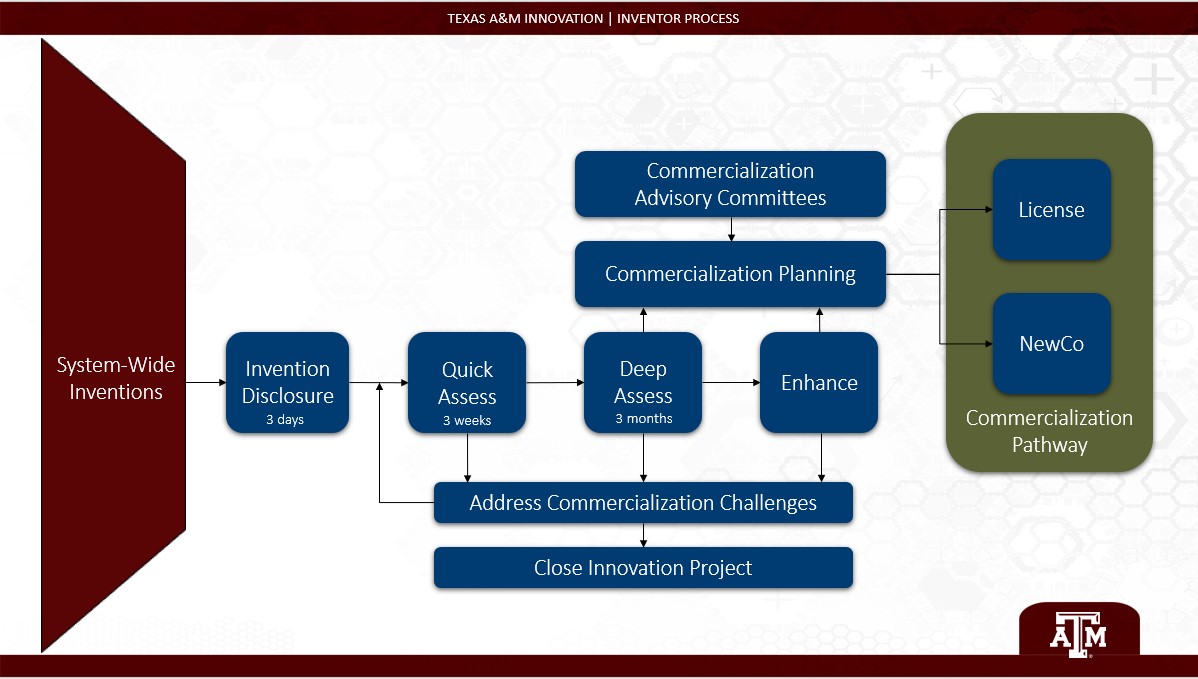Inventor Quick Links
Texas A&M Innovation (TI) uses a comprehensive process to manage Intellectual Property (IP) from across The Texas A&M University System; including engaging with the creators of IP, forming IP protection strategies, conducting market research, and implementing commercialization plans. Every year many projects are successfully commercialized, with significant societal and financial impacts.
The process flowchart captures the steps that are typical for an innovation project to achieve commercialization success through either a license to an established company or a spinout new company, with timing expectations for some of the steps. Please note that the flowchart is not meant to create “gates” that must be passed through before subsequent steps can be initiated. For example, even though filing patents typically happens after the Deep Assess step, there will be examples where the Quick Assess step provides enough justification to file a patent, allowing a patent to be filed before the Deep Assess step is completed.
The following text supplements the process flowchart and provides more details. If you still have questions after reviewing the process flowchart and the following text, please contact Texas A&M Innovation at innovation@tamus.edu and a member of our team will reply to you shortly.

License
TI will actively market the technology to potential licensees for inclusion as part of an exclusive or non-exclusive license agreement. TI will negotiate license terms with the licensee, and work with The Texas A&M University System Office of General Counsel to execute the license agreement.
NewCo
TI identifies opportunities for new venture creation and supports entrepreneurial activities for these companies. The TI New Ventures Team brings expertise to evaluate, advise, and engage in the operation of startups.
